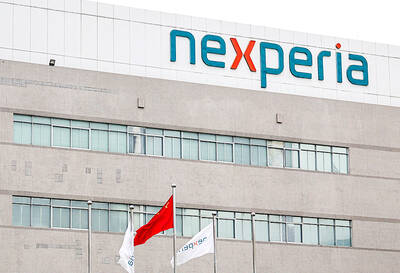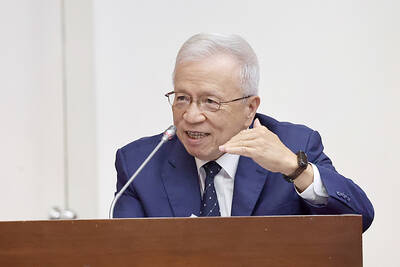Asian stock markets rose on Friday after Wall Street hit a new high as fears of the Omicron variant of SARS-CoV-2 eased.
Taipei, Hong Kong and Sydney all advanced, while Tokyo and Shanghai declined.
Wall Street’s benchmark S&P 500 index on Thursday rose 0.6 percent in the last US trading session before Christmas.

Photo: EPA-EFE
Investor anxiety has mounted as Omicron spread, but moderated after authorities said it might cause less severe illness.
US President Joe Biden called for more vaccinations and testing, but announced no plans for travel restrictions.
Omicron looks like a “short-term disruption” instead of a “destructive headwind that knocks the economy off its course,” Oanda Corp senior market analyst Edward Moya said in a report. “The US economic recovery in 2022 still looks very strong.”
In Taiwan, the TAIEX ended up 14.98 points, or 0.08 percent, at 17,961.64, posting a weekly increase of 0.84 percent.
Japan’s Nikkei 225 lost 0.05 percent to 28,782.59, but rose 0.83 percent from a week earlier, while the broader TOPIX dropped 0.13 percent to 1,986.78, up 0.12 percent on the week.
Hong Kong’s Hang Seng advanced 0.13 percent to 23,223.76, gaining 0.13 percent from a week earlier, while the Shanghai Composite Index lost 0.69 percent to 3,618.05, posting a weekly decline of 0.39 percent.
Seoul’s KOSPI added 0.48 percent to 3,012.43, but dropped 0.18 percent from a week earlier, while Sydney’s S&P/ASX 200 was 0.44 percent higher at 7,420.3, up 1.59 percent on the week.
New Zealand and Jakarta advanced, while Bangkok retreated. Singapore was closed for Christmas.
Additional reporting by staff writer, with CNA

JITTERS: Nexperia has a 20 percent market share for chips powering simpler features such as window controls, and changing supply chains could take years European carmakers are looking into ways to scratch components made with parts from China, spooked by deepening geopolitical spats playing out through chipmaker Nexperia BV and Beijing’s export controls on rare earths. To protect operations from trade ructions, several automakers are pushing major suppliers to find permanent alternatives to Chinese semiconductors, people familiar with the matter said. The industry is considering broader changes to its supply chain to adapt to shifting geopolitics, Europe’s main suppliers lobby CLEPA head Matthias Zink said. “We had some indications already — questions like: ‘How can you supply me without this dependency on China?’” Zink, who also

At least US$50 million for the freedom of an Emirati sheikh: That is the king’s ransom paid two weeks ago to militants linked to al-Qaeda who are pushing to topple the Malian government and impose Islamic law. Alongside a crippling fuel blockade, the Group for the Support of Islam and Muslims (JNIM) has made kidnapping wealthy foreigners for a ransom a pillar of its strategy of “economic jihad.” Its goal: Oust the junta, which has struggled to contain Mali’s decade-long insurgency since taking power following back-to-back coups in 2020 and 2021, by scaring away investors and paralyzing the west African country’s economy.

BUST FEARS: While a KMT legislator asked if an AI bubble could affect Taiwan, the DGBAS minister said the sector appears on track to continue growing The local property market has cooled down moderately following a series of credit control measures designed to contain speculation, the central bank said yesterday, while remaining tight-lipped about potential rule relaxations. Lawmakers in a meeting of the legislature’s Finance Committee voiced concerns to central bank officials that the credit control measures have adversely affected the government’s tax income and small and medium-sized property developers, with limited positive effects. Housing prices have been climbing since 2016, even when the central bank imposed its first set of control measures in 2020, Chinese Nationalist Party (KMT) Legislator Lo Ting-wei (羅廷瑋) said. “Since the second half of

AI BOOST: Next year, the cloud and networking product business is expected to remain a key revenue pillar for the company, Hon Hai chairman Young Liu said Manufacturing giant Hon Hai Precision Industry Co (鴻海精密) yesterday posted its best third-quarter profit in the company’s history, backed by strong demand for artificial intelligence (AI) servers. Net profit expanded 17 percent annually to NT$57.67 billion (US$1.86 billion) from NT$44.36 billion, the company said. On a quarterly basis, net profit soared 30 percent from NT$44.36 billion, it said. Hon Hai, which is Apple Inc’s primary iPhone assembler and makes servers powered by Nvidia Corp’s AI accelerators, said earnings per share expanded to NT$4.15 from NT$3.55 a year earlier and NT$3.19 in the second quarter. Gross margin improved to 6.35 percent,